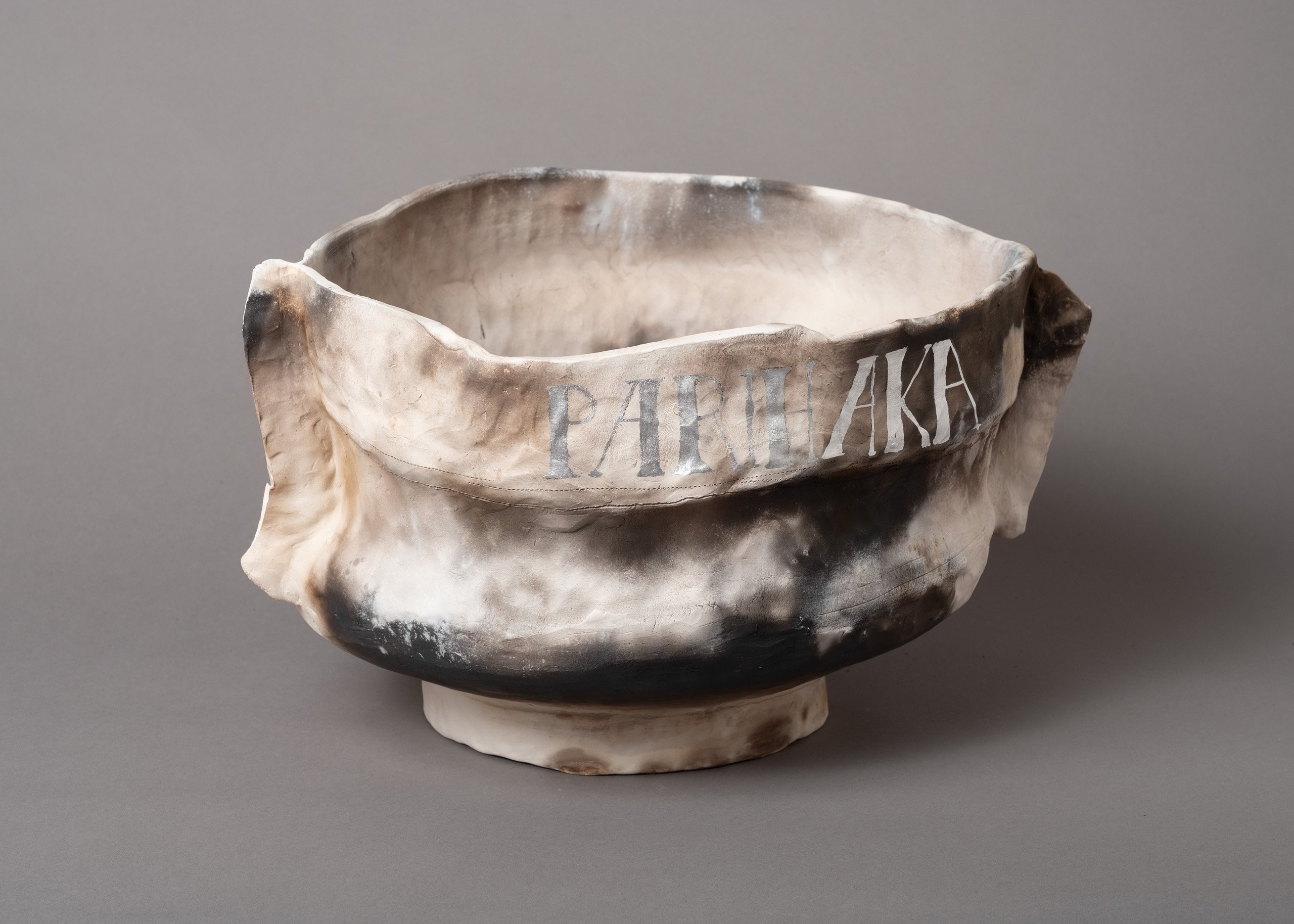
Rachel Buchanan pens an essay in response to Maia Kreisler's exhibition, Ka Mua, Ka Muri - Walking Backwards Into the Future.
The writer Alexis Wright, a member of the Waanyi nation of the southern highlands of the Gulf of Carpentaria, has asked if people who come to Australia from other places bring their ancestors with them. As Tony Birch writes in ‘Sovereignty of the Imagination’, an essay about Wright’s work, “once contemplated, such a question can not be forgotten”.
Artist Maia Kreisler is an uri (descendant) of Taranaki, a mountain on the west coast of the North Island of Aotearoa New Zealand and so am I.
Both of us are also manuhiri (guests) here on unceded Wurundjeri and Bunurong Country in Naarm and when I agreed to write an essay to accompany Ka Mua, Ka Muri, Wright’s question popped into my mind.
Yes, we bring our tūpuna (ancestors) with us to Te Ao Moemoeā (Australia) but Maia’s expertise with clay allows her to give three-dimensional form to the thoughts and desires of these old people, the values that allowed them to survive “the apocalypse of colonisation, of influenza, of invasion and confiscation”.
The importance of face to face conversation, the comfort of sharing a meal, the radical act of offering hospitality even to your enemies, the growth that can come from failure and collapse, these are some of the teachings embodied in Maia’s beautiful, esoteric work.
In the Māori world, to work with uku (clay) is to touch the stuff of creation. Pūrākau (ancient stories) speak of the first woman, Hineahuone, being made of clay and Papatūānuku, the earth mother, holds the word for clay within her name.
Although Ka Mua, Ka Muri contains only one human form – a serene bust ‘Upoko Moemoeā’ painted a dreamy silver – every one of the 13 handbuilt pieces feels alive.
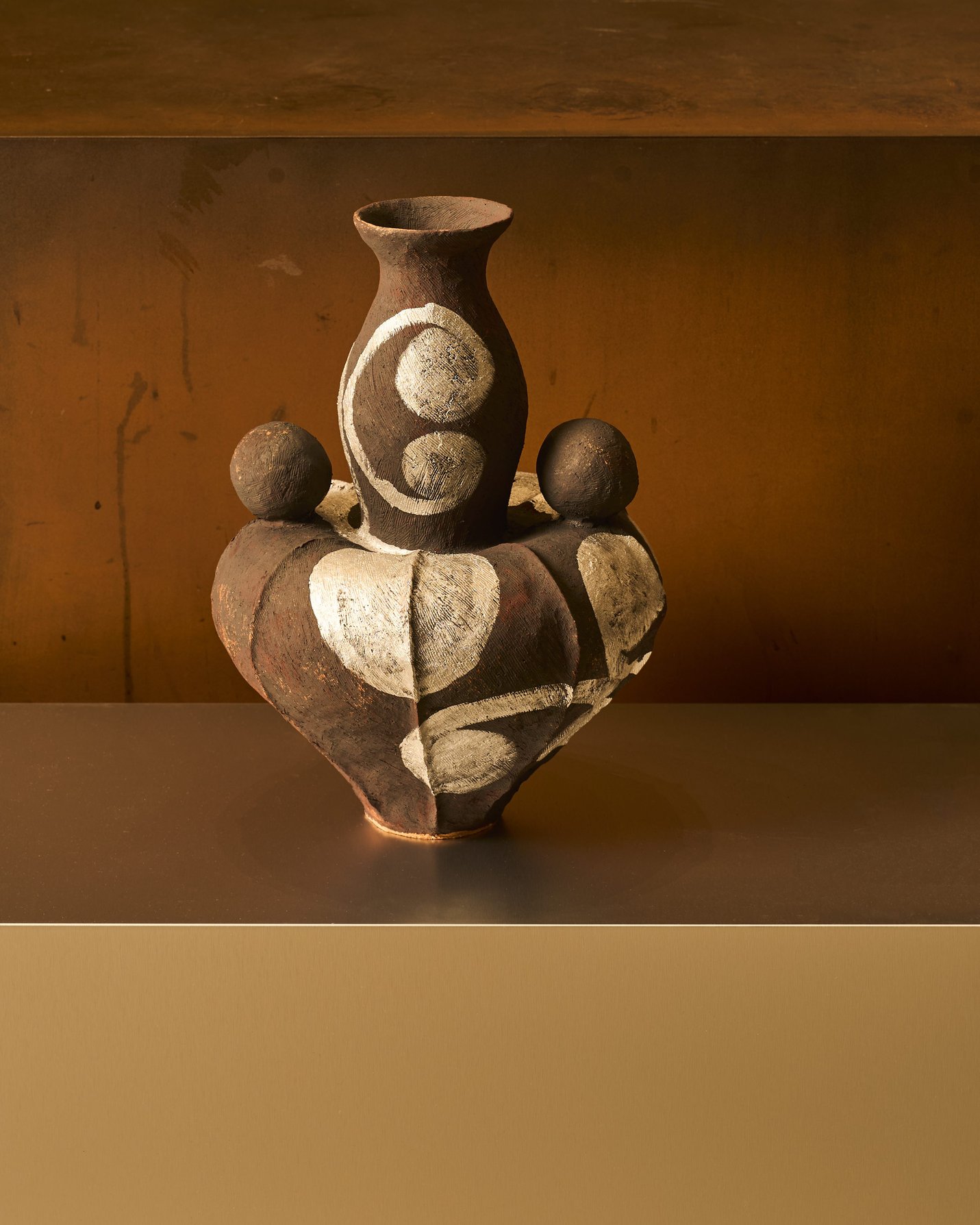
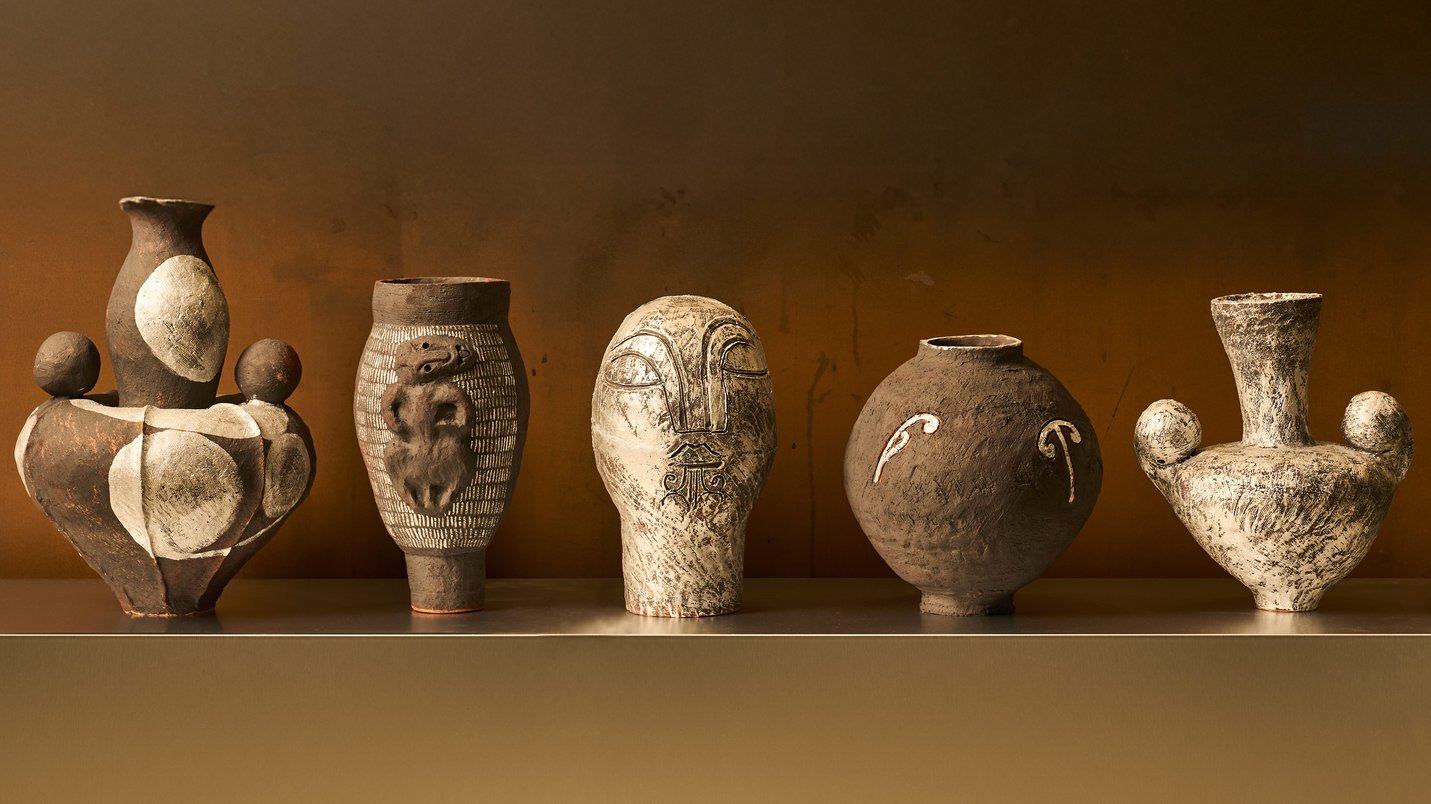
Maia’s works, which were mostly made in 2025 with the assistance of Leilani Turner and Charlotte Eisenberg, are displayed on a shelf along one wall in the atrium of Craft Victoria.
Together, they are like a patient hongi line waiting to welcome visitors into the main gallery where two exhibitions by First Nations artists honour NAIDOC week 2025, the 50th anniversary of this annual celebration of Aboriginal and Torres Strait Islander voices, culture and resistance.
Dancing Hands, curated by Maya Hodge (Lardil), exhibits the work of six Aboriginal women artists, weavers and sculptors while Clay Kin is a new collection of work by seven members of the APY Art Centre Collective.
In her curatorial statement, Hodge says the work in Dancing Hands comes from “deeply-embedded traditions that embody resistance as truth-telling, love and joy, all rooted within Country and kinship”.
Maia’s work is also about kinship (whakapapa) of all kinds and hospitality (manaakitanga) as a subtle form of resistance.
First there is the whakapapa of knowledge transmission.
Maia studied under Wī Taepa, a ceramicist and carver who makes his work by hand by coiling, slab and pinching techniques.
Maia’s hands remember lessons learned from her kaiako (teacher) at Te Wānanga Aotearoa. For example, ‘Marama Tuarua’ (Second Moon) is decorated with kōwhaiwhai motifs Wī taught her, “an act of continuation, honouring knowledge passed directly from master to student”.
Then there is the whakapapa of the artist’s own back catalogue.
‘Tū’ [to stand/soldier], made from black iron oxide, is a homage to earlier much-loved works created while studying with Taepa. With this piece, Maia coaxed ideas from the clay, gently shaping beautiful little pinch pots to see what shapes would emerge. “The most successful works can be the ones that are unplanned,” Maia says.
Ka Mua, Ka Muri is also about what can be learned from failure – the pots that cracked and broke, the ones that didn’t survive firing.
‘Ko te Pūtake o te Aho’ (the source of the thread) is a smaller version of a monumental pot Maia attempted during a residency in the Coromandel, on the East Coast of Aotearoa’s North Island. “I tried to make this huge vessel and it totally fell apart and cracked,” Maia says. “This time, I made it humble, I made it small...and I perfected it. I honed everything I had learned.”
Both Maia and I are connected, through whakapapa, to Parihaka, a small community in Taranaki that in the 19th century was home to thousands of people who sheltered there under the protection of Te Whiti o Rongomai and Tohu Kākahi, spiritual and political leaders who became known as prophets of peace.
When colonial troops invaded Parihaka in 1881, they were greeted by a feast. You come with guns, I offer you bread. You imagine a violent end, I see a collaborative future.
It’s a moment, a place and a philosophy that can never be exhausted.
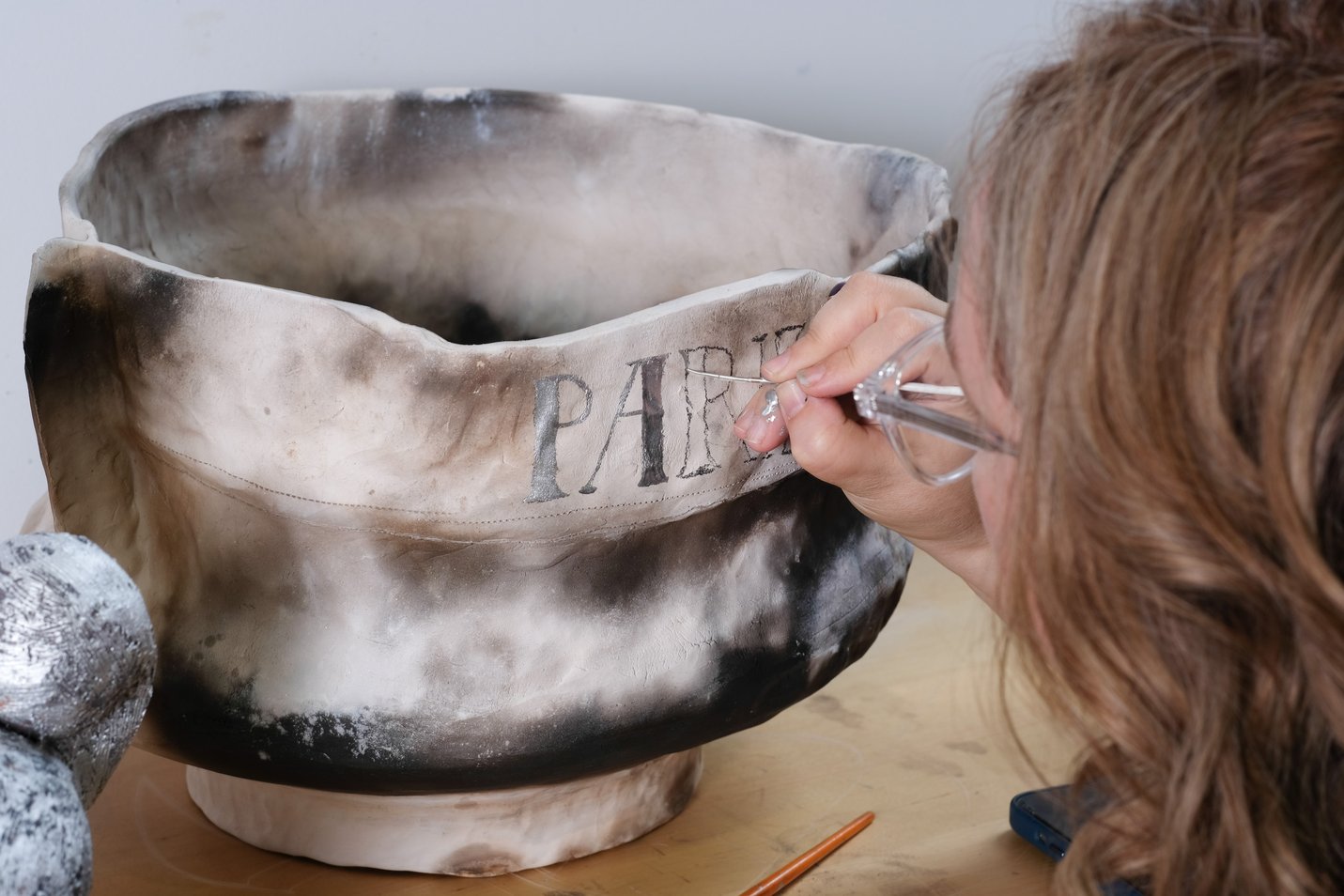
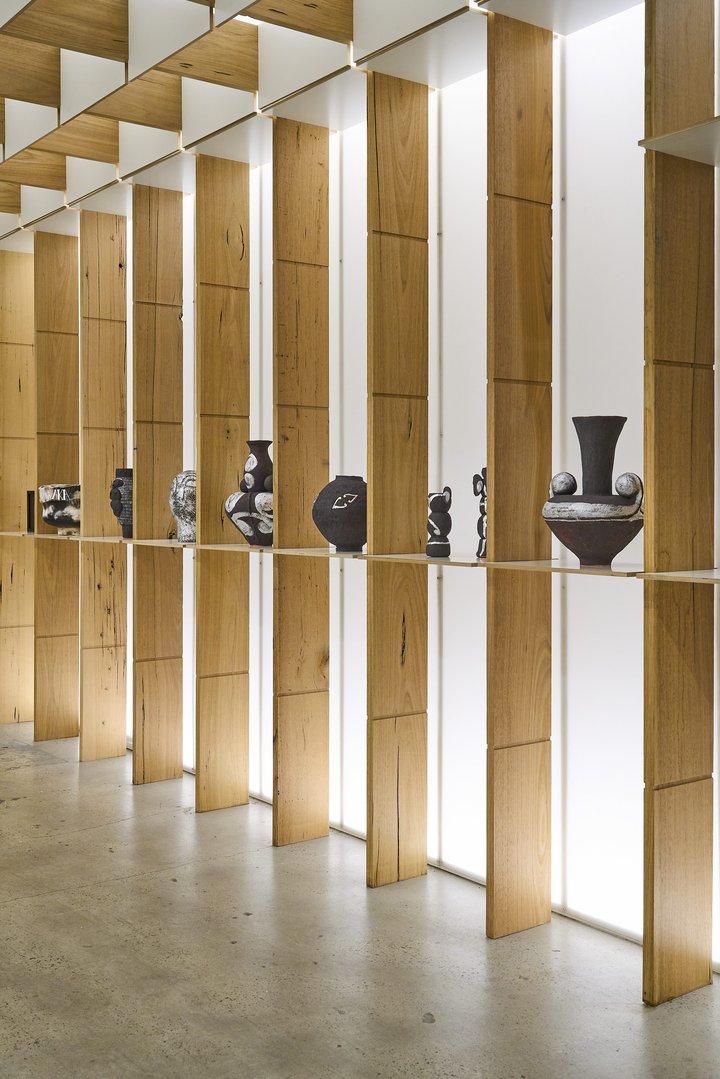
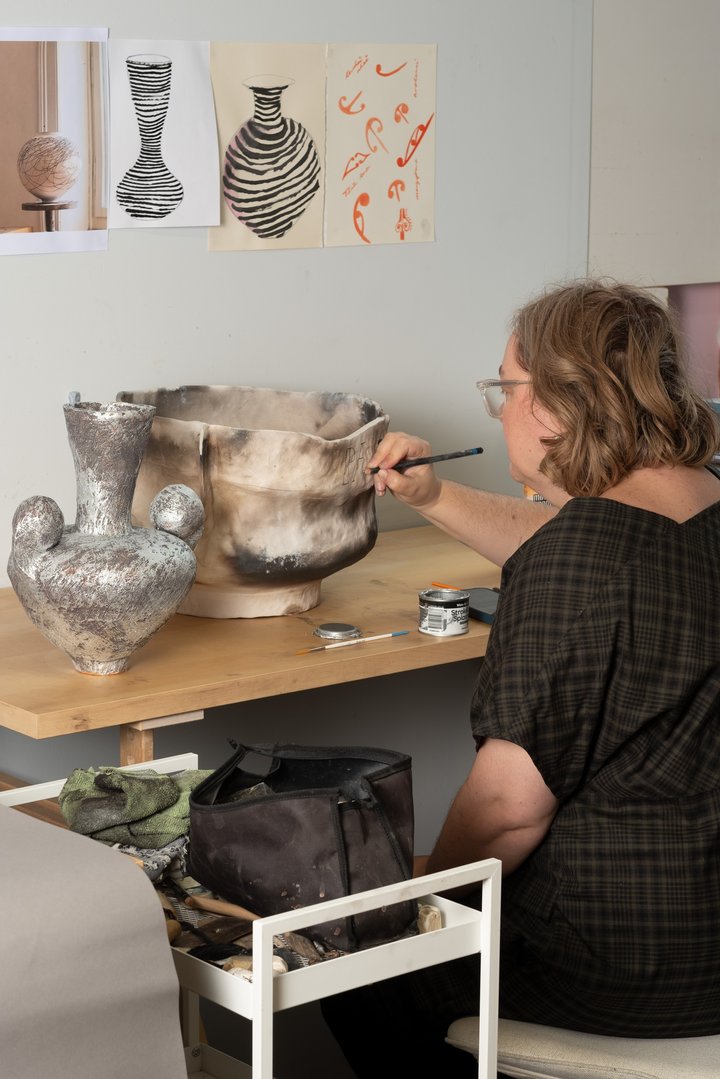
Parihaka Vessel is made from clay Maia dug up in the Coromandel and then pit-fired back in Taranaki, using driftwood (rich in salt), cow-pats, seaweed and many kinds of compost. This ancient technique is like a hangi for ceramics and the result is a large bowl-shaped vessel that looks as if it could burst into flames – the creamy surface is mottled with smoke.
Maia made this vessel in 2018 but the lettering around the rim is new. The artist used a Japanese calligraphy brush to write Parihaka in silver oil paint and the style of lettering is a homage to the Parihaka font designed by Neil Pardington for an influential exhibition, Parihaka: The Art of Passive Resistance (2000-2001).
‘All the mauri (life force) this vessel had gathered over time, it was the central pou to start building this new body of work,’ she says.
The title of Maia’s show, Ka Mua, Ka Muri – Walking Backwards Into The Future, references a Whakatauākī (proverb) that expresses Māori ideas of time as being more circular than linear. We walk towards our past. It’s not quite the same as what Alexis Wright calls “all times” or “the infinite clock of Country”, the stupendous depth of time that comes from Aboriginal cultures connected to Country for 60,000 years or more, but it’s related.
‘Mō Ake Tonu’. Forever. Handbuilt. Black iron oxide. Silver painted kōwhaiwhai. On one side, Maia’s vessel is decorated with koru, the coiled shape that represents growth, renewal and possibility. On the other, an infinity symbol, “a looping, endless gesture toward that which continues”.
The work of First Nations artists from all the different Countries of this spectacular continent floats on an infinite time that leaves us awe struck. We are deeply grateful to our hosts for giving us space to create here.
References
1. Tony Birch, ‘Sovereignty of the imagination’, The Monthly, April 2023, https://www.themonthly.com.au/april-2023/arts-letters/sovereignty-imagination-alexis-wright [accessed 23 June 2025]
2. Tina Makareti, ‘Meeting the ancestor on the road’, This Compulsion In Us (Wellington: Te Herenga Waka Press, 2025), p. 18.
3. For an introduction to pūrākau, see Wāhine Toa Omnisicient Māori Women with paintings and drawings by Robyn Kahukiwa, text by Patrcia Grace, te reo translation by Hēni Jacob (Ōtaki: Te Wānanga o Raukawa, 2018).
4. For more on Taepa see Toi Tū Toi Ora: Contemporary Māori Art, edited by Nigel Borell (Auckland: Penguin and Auckland Art Gallery Toi o Tamaki, 2022) and Baye Riddell, Ngā Kaihanga Uku Māori Clay Arists (Wellington: Te Papa Press, 2023). Taepa was a founding member of Ngā Kaihanga Uku.
5. See ‘Introduction from Parihaka’ in Hazel Riseborough, Days of Darknesss Taranaki 1878-1881 (Wellington: Bridget Williams Books, third edition, 2023); Rachel Buchanan, The Parihaka Album: Lest We Forget (Wellington: Huia, second edition, 2024) and Rachel Buchanan, Ko Taranaki Te Maunga (BWB Texts, 2018).
6. Alexis Wright, ‘The Sovereign Time of Country’, Australian Book Review, no. 458, October 2023, p.12.